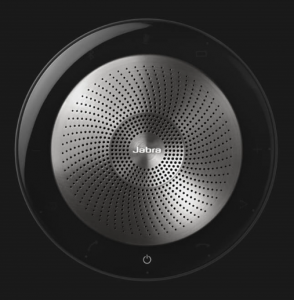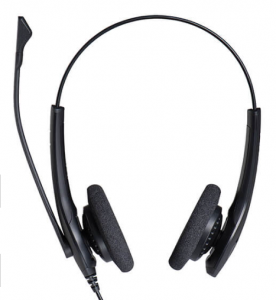An introduction to Microsoft Qualified Intelligent Communication Devices
As a Voice Technical Solutions Professional at Microsoft I have a passion for Skype for Business and Microsoft Teams. More specifically, the devices that connect to these wonderful services. Over the next few months, I will present my thoughts, relevant links, quotes, and information on the devices that connect to Skype for Business (SFB) Server, Skype for Business Online (SFBO) and Microsoft Teams.
When you think of Intelligent Communications (formally called Unified Communications), you may think of your favorite Instant Messaging app, or something your employer forces you to use. Whatever your collaboration program of choice, the audio/video component will most likely require some sort of device to make that portion work.
Many of us will unknowingly grab the first set of ear buds or cheap headset that we have laying around. The drawback to doing this is the potential for what we in the industry call a poor user experience. A Microsoft Qualified device should always be used to help ensure the user has a great experience. This does not guarantee a great user experience because there are many other factors that must also be accounted for, such as network performance. By using the proper headset, one more variable is removed when troubleshooting.
Qualified devices have passed a set of rigorous tests defined by Microsoft to ensure they meet the high standards for compatibility. Microsoft has an extensive qualification process outlined here. There are multiple Microsoft Partners who manufacture VoIP Phones and Headsets qualified under this program. A complete list is located here. The list includes phones, headsets, speakerphones, etc. from partners such as Audio Codes, Jabra, Plantronics, Polycom, Sennheiser, and Yealink .
Below is information on several categories of devices and examples:
- Headsets come in two categories: Wired and Wireless. Wired headsets connect using a USB or 3.5 mm audio jack and the wireless utilize Bluetooth and Digital Enhanced Cordless Technologies or DECT. Presently, these devices come in one of several form factors: Speakerphone, Monaural (single earpiece), Duo (dual earpiece), and Over the Ear (OTE).
- Examples of speakerphone devices include the Jabra 710 series, Plantronics Calisto 600 Series, Polycom VoxBox, and the Sennheiser SP series. It should be noted that these speaker phone options are designed for individual use or small conference rooms. Each of the headset manufacturers also make board room level speaker phones as well. We will cover those in a later series. Examples of these speakerphone devices are below with a link to the manufacturer’s website for additional information.
- USB Headset examples include, but are not limited to the Jabra Biz Series, Plantronics Blackwire series and the Sennheiser SC 75. Examples of these headsets are below with a link to the manufacturer’s website for additional information.
- There are a variety of great hands-free options that provide great sound quality and nearly all day battery life. Examples are the Jabra Evolve and Pro Series (certain models only), Plantronics Voyager and Explorer series, and the Sennheiser MB Series. Examples of these hands free options are below with a link to the manufacturer’s website for additional information.
- VoIP Phones that are qualified to work with Skype for Business are available from partners such as AudioCodes, Polycom, and Yealink. Examples of these phones include, but are not limited to the Audio Codes 400HD series, Polycom VVX Series (Skype for Business versions), and Yealink T4 series. For a complete and updated list, please review this site.
- Examples of these VoIP devices are below with a link to the manufacturer’s website for additional information.
“The headset, speakerphone, and VoIP desk phone choices are vast and finding the right one generally comes down to comfort, user preference and price” according to Ted Estwan of Novus LLC, a Microsoft Gold Partner specializing in endpoint devices. Each of these manufacturers also have management software for use in deployment and monitoring or metrics. Additional information about management capabilities of each manufacturer is in this blog.
As I previously stated, this is the first of many blogs I am beginning to publish about a topic I am deeply passionate about. My goal is to highlight topics, questions, and other tips and suggestions I hear and often suggest to my customers. If you have a topic you would like to know more about, please leave a comment in the space below.
Comments
- Anonymous
November 06, 2017
All this headsets have microphones, but we can use the computer microphone or a laptop microphones and we use the hand microphone and we hear the voice with out headsets as i have it to day.- Anonymous
November 06, 2017
Thank you for your comment. While it is true that most laptops/tablets have a microphone and speakers built in to them, they do not qualify as "Qualified Devices". In general, they do not provide the same level of Quality of Experience (QOE) that a Qualified Device would.
- Anonymous
- Anonymous
November 07, 2017
Hi Scott, I love the way you simplify this Technical topic to your readers! Really enjoyed this article knowing that I ve nerver wondered about the devices I use. Could you plan an article about pure telephony concepts?Thanks and good luck with your blog!!!- Anonymous
November 07, 2017
Randa, Thank you very much for your comments. Yes, Telephony concepts along with most things Intelligent Communications related will be the primary focus, but who knows, maybe I will throw in a recipe or two of my favorite dinners......
- Anonymous












